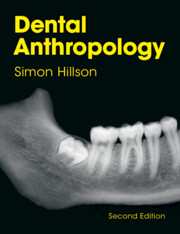In the aftermath of the Permo-Triassic mass extinction event, several reptile lineages radiated to form major components of marine faunas during the entire Mesozoic. The Lower Muschelkalk, which was deposited within a shallow inland sea in the Germanic Basin during the Middle Triassic, is one of the most important regions for understanding the early evolution of Mesozoic marine reptiles. Here, we present a new specimen from the Lower Muschelkalk of Winterswijk in the Netherlands, comprising an isolated left dentary that is morphologically distinct from any well-known Triassic vertebrate. We provide a detailed description of the jaw and the teeth using histological and micro-computed tomographic analyses. The anterior teeth are fang-like and curved, whereas the posterior teeth are wider and triangular-shaped. Tooth implantation is thecodont and teeth are ankylosed to the base of the alveolus. Replacement teeth are developed directly lingual to the functional teeth, starting with the formation of a resorption cavity on the dorsal surface of the alveolar margin. The replacement pattern cannot be observed in detail but is regular in the posterior part of the dentary with each tooth being alternated with an empty alveolus. The specimen can likely be assigned to Eosauropterygia based on its jaw morphology and dental morphology and replacement pattern, and it is remarkably similar to maxillae referred to the enigmatic Lamprosauroides goepperti from the Lower Muschelkalk of Poland. The dentary from Winterswijk lacks enlarged, ‘alveolarised’ crypts and corresponding distinct dental lamina foramina (DLFs) for the replacement teeth, a configuration that is typical of Sauropterygia, but which was likely not omnipresent in this clade. The specimen also exhibits loosely folded plicidentine at the roots of the teeth, likely representing the first identification of this feature in Sauropterygia.


